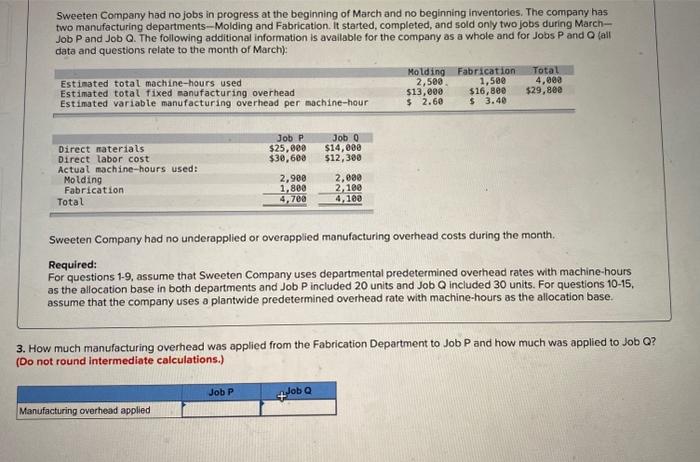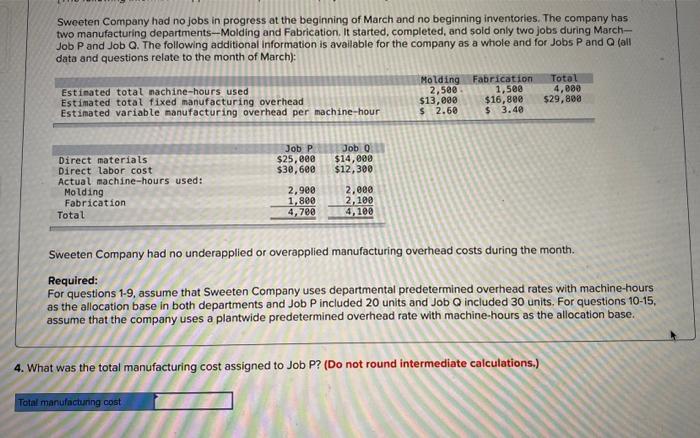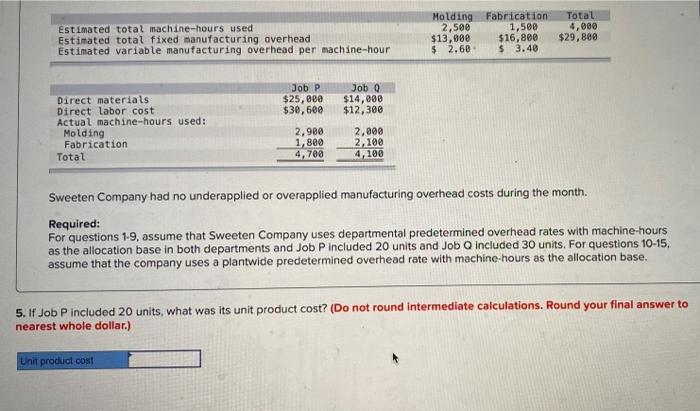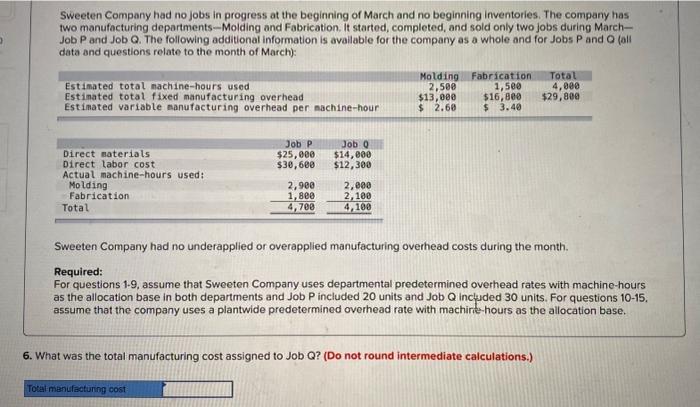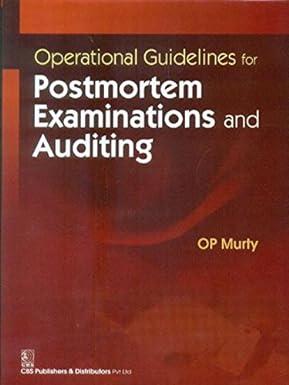Sweeten Company had no jobs in progress at the beginning of March and no beginning inventories. The company has two manufacturing departments-Molding and Fabrication. It started, completed, and sold only two jobs during MarchJob P and Job Q. The following additional information is avallable for the company as a whole and for Jobs P and Q (ail data and questions relate to the month of March): Sweeten Company had no underapplied or overapplied manufacturing overhead costs during the month. Required: For questions 1-9, assume that Sweeten Company uses departmental predetermined overhead rates with machine-hours as the allocation base in both departments and Job P included 20 units and Job Q included 30 units. For questions 1015. assume that the company uses a plantwide predetermined overhead rate with machine-hours as the allocation base. How much manufacturing overhead was applied from the Fabrication Department to Job P and how much was applied to Job Q? oo not round intermediate calculations.) Sweeten Company had no jobs in progress at the beginning of March and no beginning inventories. The company has: two manufacturing departments-Molding and Fabrication. It started, completed, and sold only two jobs during MarchJob P and Job Q. The following additional information is avallable for the company as a whole and for Jobs P and Q (all data and questions relate to the month of March): Sweeten Company had no underapplied or overapplied manufacturing overhead costs during the month. Required: For questions 1-9, assume that Sweeten Company uses departmental predetermined overhead rates with machine-hours as the allocation base in both departments and Job P included 20 units and Job Q included 30 units. For questions 1015, assume that the company uses a plantwide predetermined overhead rate with machine-hours as the allocation base. 4. What was the total manufacturing cost assigned to Job P? (Do not round intermediate calculations.) Sweeten Company had no underapplied or overapplied manufacturing overhead costs during the month. Required: For questions 1.9, assume that Sweeten Company uses departmental predetermined overhead rates with machine-hours as the allocation base in both departments and Job P included 20 units and Job Q included 30 units. For questions 1015. assume that the company uses a plantwide predetermined overhead rate with machinc-hours as the allocation base. 5. If Job P included 20 units, what was its unit product cost? (Do not round intermediate calculations. Round your final answer to nearest whole dollar.) Sweeten Company had no jobs in progress at the beginning of March and no beginning inventories. The company has two manufacturing departments-Molding and Fabrication. It started, completed, and sold only two jobs during MarehJob P and Job Q. The following additional information is avallable for the company as a whole and for Jobs P and Q (all data and questions relate to the month of March): Sweeten Company had no underapplied or overapplied manufacturing overhead costs during the month. Required: For questions 1.9, assume that Sweeten Company uses departmental predetermined overhead rates with machinc-hours as the allocation base in both departments and Job P included 20 units and Job Q included 30 units. For questions 1015. assume that the company uses a plantwide predetermined overhead rate with machirte-hours as the allocation base. 5. What was the total manufacturing cost assigned to Job Q ? (Do not round intermediate calculations.)
